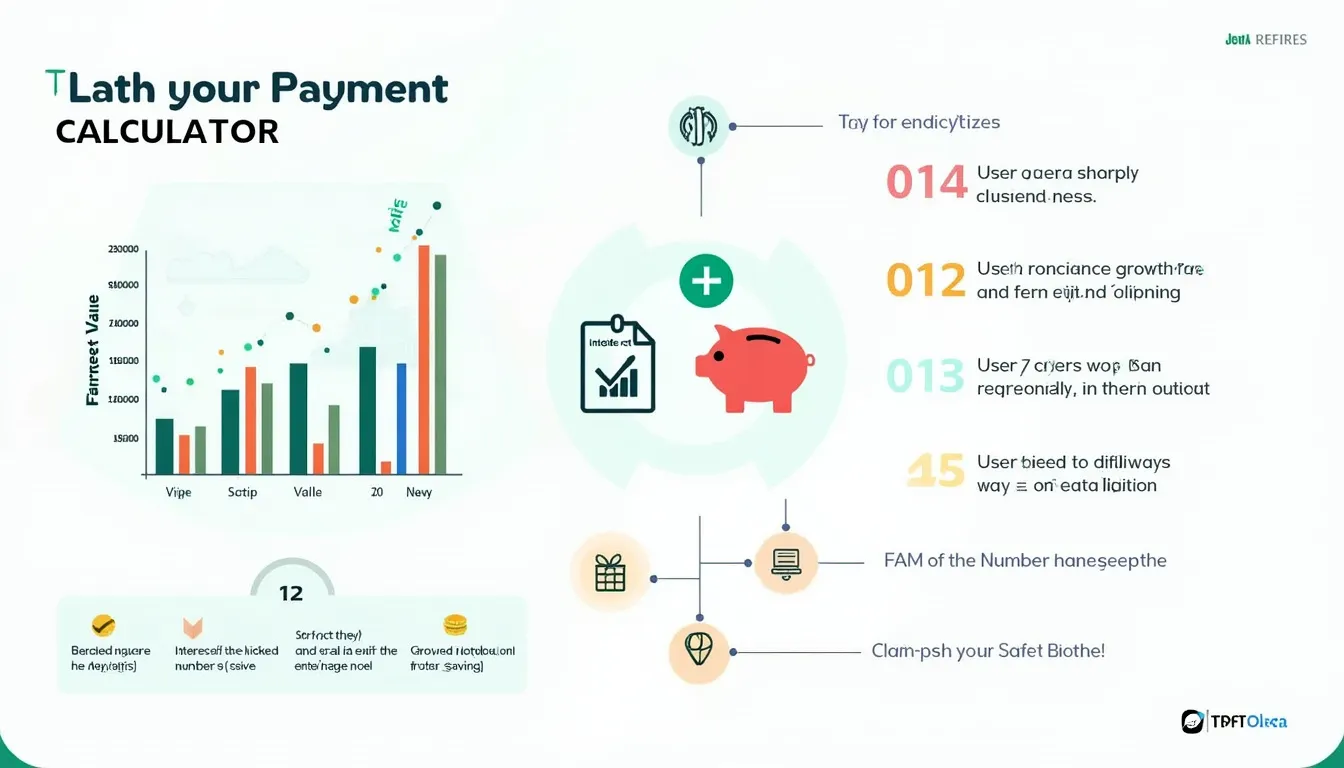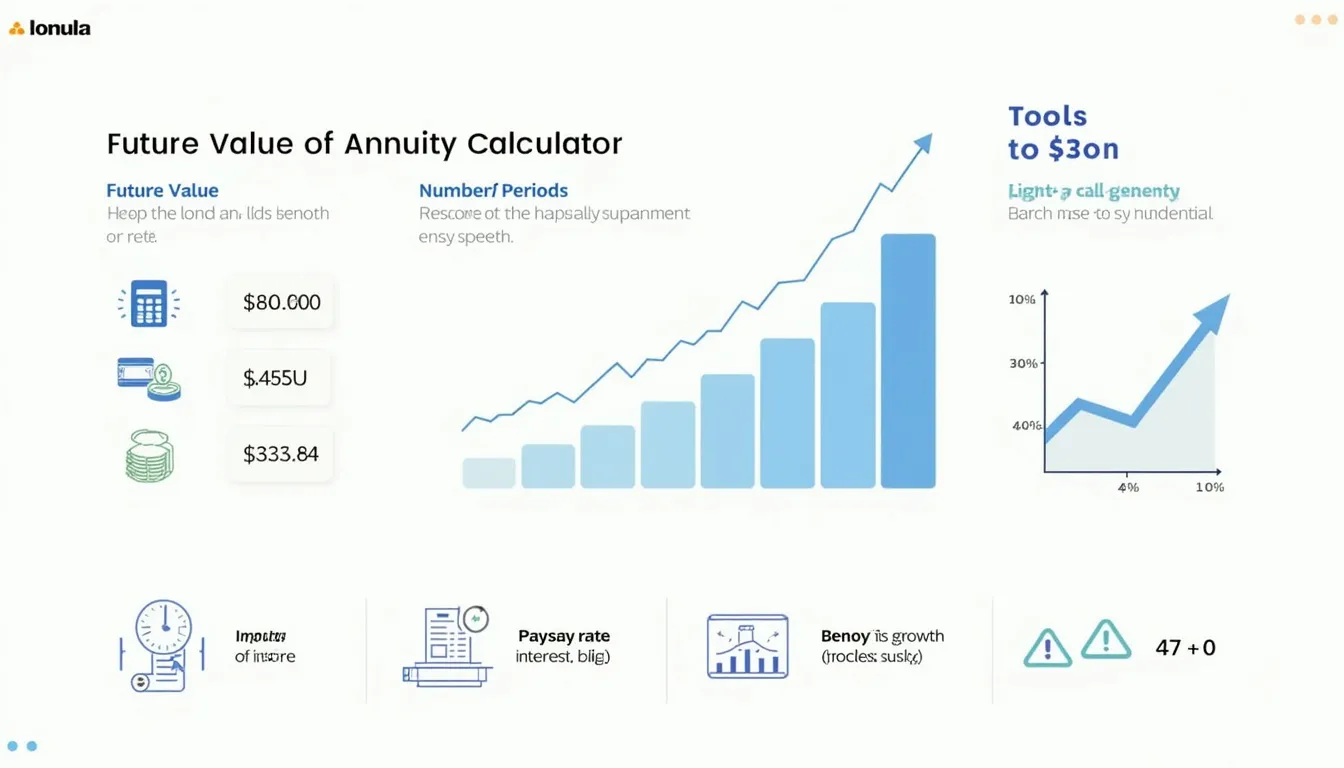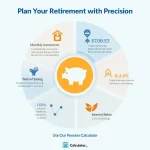Growing Annuity Payment Calculator
Is this tool helpful?
How to use the tool
- Future Value – type the amount you want accumulated.
Try 90 000 or 425 000. - Rate per Period (%) – enter the expected return each period.
Try 5.2 or 7.4. - Growth Rate (%) – state how much each payment should increase.
Try 2.1 or 3.8. - Number of Periods – count of deposits you will make.
Try 12 or 30. - Press Calculate to see the initial payment.
Underlying formula
The tool applies the growing-annuity equation:
$$ P = FV \; rac{(r-g)}{(1+r)^{n} – (1+g)^{n}} $$where P is the first payment, FV the target amount, r the return rate, g the payment-growth rate and n the number of periods. The formula holds only when r > g.
Example A
- FV = 200 000
- r = 6 % (0.06)
- g = 3 % (0.03)
- n = 20
Calculation:
- r – g = 0.03
- (1+r)20 ≈ 3.208
- (1+g)20 ≈ 1.806
- P = 200 000 × 0.03 / (3.208 – 1.806) ≈ 4 281
Example B
- FV = 120 000, r = 5 %, g = 2 %, n = 15
- P ≈ 4 485
Quick-Facts
- Formula requires r > g to converge (Corporate Finance Institute 2023).
- Typical equity returns average 7-9 % yearly over 30 years (S&P 500 Fact Sheet 2022).
- U.S. inflation averaged 2.5 % since 1990, guiding payment-growth choices (BLS CPI Data 2023).
- “Periodic increases protect purchasing power,” IRS Publication 590-A §1.
FAQ
What does the calculator output?
It returns the first payment required so that escalating deposits grow to your chosen future value.
Why must the return rate exceed the growth rate?
If growth matches or beats the return, the denominator becomes zero or negative, making the formula invalid (CFI 2023).
Can I model quarterly deposits?
Yes—convert annual rates to quarterly equivalents and set periods to total quarters.
How do I adjust for taxes?
Use an after-tax return rate; subtract expected tax drag from the nominal rate (IRS Pub. 550 2023).
What happens if I input g = 0?
The equation simplifies to the standard annuity payment formula because payments stay level.
Is compounding assumed to match deposit frequency?
Yes; the model assumes returns compound at the same interval you contribute (Brealey & Myers 2020).
Can I target a real (inflation-adjusted) future value?
Inflate your nominal FV using expected CPI, then run the calculator with real return and growth rates.
How accurate is the model for volatile markets?
It uses constant averages; real-world variance will shift actual outcomes, so revisit inputs yearly.
Important Disclaimer
The calculations, results, and content provided by our tools are not guaranteed to be accurate, complete, or reliable. Users are responsible for verifying and interpreting the results. Our content and tools may contain errors, biases, or inconsistencies. Do not enter personal data, sensitive information, or personally identifiable information in our web forms or tools. Such data entry violates our terms of service and may result in unauthorized disclosure to third parties. We reserve the right to save inputs and outputs from our tools for the purposes of error debugging, bias identification, and performance improvement. External companies providing AI models used in our tools may also save and process data in accordance with their own policies. By using our tools, you consent to this data collection and processing. We reserve the right to limit the usage of our tools based on current usability factors.







